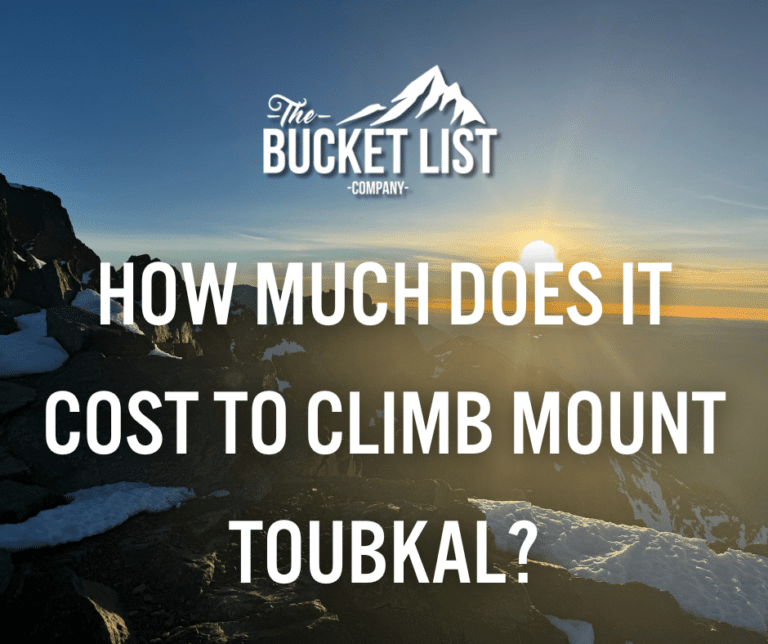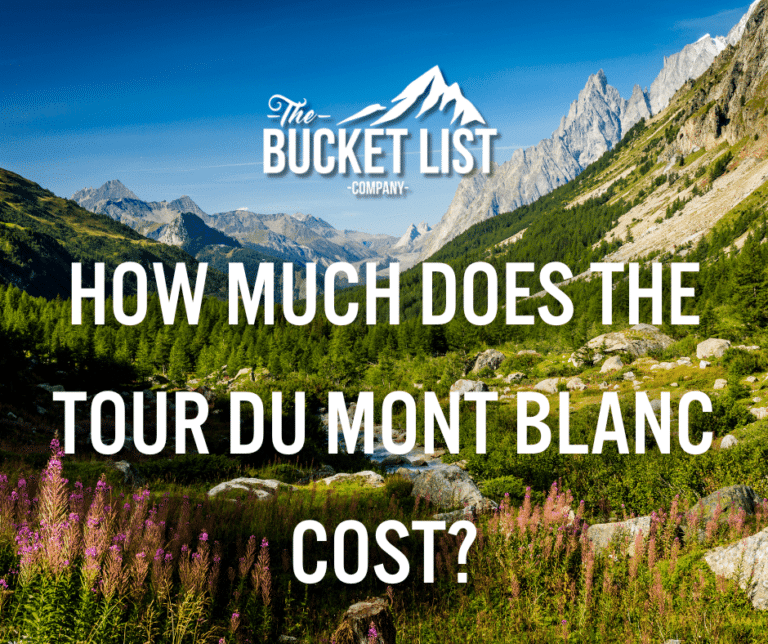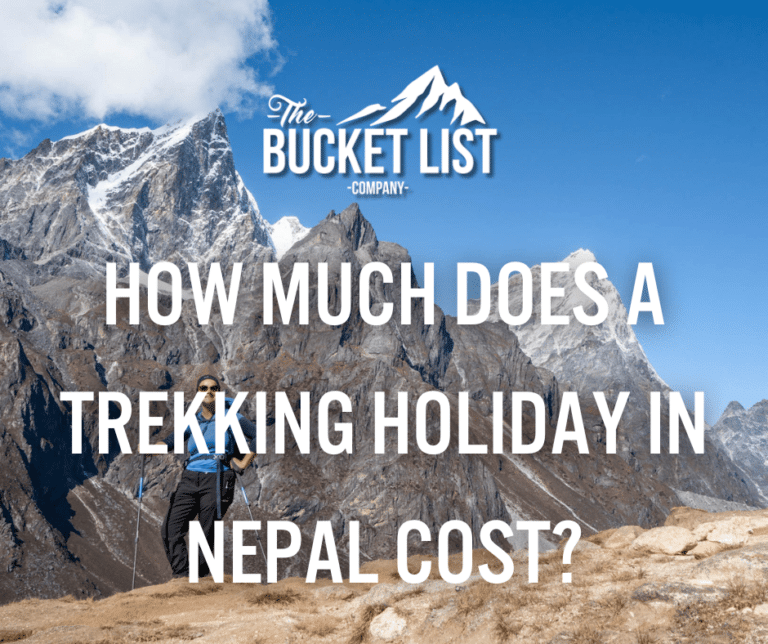The battle of the big ones…
Which Is Harder Kilimanjaro or Everest Base Camp?
No two treks are more likely to be on a budding mountaineer’s Bucket List than Kilimanjaro in Tanzania and Everest Base Camp in Nepal – but which one would be the easier to tackle first?
Short answer: EBC. But you’re not here for the short answer.
You’re probably here because you’re getting serious about adventure travel and genuinely thinking about conquering one of these beasts. So if you want to understand exactly what makes EBC and Kili as challenging (and as bloody fantastic) as they are – keep reading.
In this blog, we look at the five big differences between these two aspirational climbs and show you why we think Kilimanjaro is probably your harder option. Let’s go.
Which is Longer? Kilimanjaro or Everest Base Camp?
So we said Kili’s the harder option, but there’s no denying this: EBC is longer, by quite some distance.
There are a few different routes you can take up Kilimanjaro, ranging from 53km (33 miles) to 98km (61 miles). Meanwhile in Nepal, the most direct and typical route to EBC is some 130km (81 miles) in total.
…Which is why you’ll need to take more days off to complete Everest Base Camp than Kilimanjaro. It’s possible to summit Kilimanjaro in as little time as five days if you’re already an altitude-boss. Most people take around 8-10 days to do it though, which gives you a smaller chance of getting altitude sickness along the way. More on that in a mo.
You’ll trek roughly 10 to 18km (6 to 11 miles) each day on an EBC trek, compared to just 4 to 11km (2 to 7 miles) per day on Kilimanjaro. Our Everest Base Camp trek is 17 days long with 12 days of trekking. Stick on another three days if you want to add in the Gokyo Lakes option or Island Peak. Be rude not to…
In comparison, our Kilimanjaro summit treks are shorter, 12 days away with 8 days of actual trekking on the Lemosho route, or just six days of trekking on the Marangu route.

Dealing with altitude on Kilimanjaro vs Everest Base Camp – which is higher?
Kilimanjaro’s Uhuru Peak is higher than Everest Base Camp, but not by much. The Kili summit is 5895m (19,341ft) above sea level while EBC is 5,364m (17,598ft).
BUT on most EBC treks (ours included), you’ll have the option to climb to the nearby peak Kala Patthar before or after you reach EBC. That adds on more vertical metres, taking your overall elevation to 5,644m (18,519ft).
None of these altitudes are to be sniffed at, and you’ll need to stick to a strict “climb high, sleep low” schedule to lower your chances of getting altitude sickness, which can put a stop to your climb altogether.
There are seven routes up Kilimanjaro altogether and some are shorter and steeper than others, which make them a heck of a lot harder to handle when it comes to altitude. The more acclimatisation days you add into your trekking itinerary, the better chance you’ll have against the effects of the elevations. (We include multiple acclimatisation days in all our mountain treks!)
How does the accommodation compare on Kilimanjaro vs Everest Base Camp?
In terms of creature comforts, you’ll have more of them on an EBC trek, which is another reason we think Kilimanjaro is harder than Everest Base Camp.
Think cosy teahouses with warm communal dining rooms, proper showers and loos, somewhere to charge your phone and even a bed with a mattress! You can find out more about the EBC teahouses in Nepal in our top-to-toe rundown here.
You’re much more likely to be sleeping under canvas on a Kilimanjaro trek, wrapping up warm and hunkering down for the night in a sleeping bag on a roll-up mattress. There’s something beautiful about unzipping the tent to awe-inspiring views (and your fellow trekkers’ puffy-eyed faces) each morning though!
Which “summit” is harder – Kilimanjaro or Everest Base Camp?

Hands-down, Kilimanjaro’s the winner here.
Talk to anyone who’s summited Uhuru Peak in the past and you’ll notice their eyes glaze over as they remember what summit night was like. It takes real physical and mental endurance to make it to the peak (and then to hike hours downhill afterwards to get to the next campsite).
You start at midnight, taking a sharp route upwards towards the summit glaciers and climbing on steep scree for four hours, gaining nearly 1,200m in elevation in that little amount of time. It’s not easy, but the views and the feeling of achievement are well worth your effort.
Trekking on summit day can take up to 15 hours, but as those first rays of rising sun hit you on the crater rim beneath the ice cliffs, you’ll quickly realise why that midnight start time was so important, and you certainly won’t regret it.
Reaching EBC is a lot less tough but just as rewarding, and you’ll likely be summitting Kala Patthar at some point on your trek too, which adds to the challenge factor (and rewards you with even more delicious views).
How much training do you need for Everest Base Camp vs Kilimanjaro?
Don’t underestimate the level of fitness required for both these treks – you DO need to get some practice in before tackling either.
Summit day on Kilimanjaro is a tougher ask than any of the EBC trekking, but the training required for both climbs is much the same.
No need to run a marathon or hit the weights machines every day, but regular walking with a full rucksack will really help you prepare, particularly if you can do it with a bit of altitude in cold, crisp weather.
In our Trekking Training 101 guide, we give you loads of tips to help you train for Everest Base Camp and Kilimanjaro, and provide you with a step-by-step schedule to stick to. Have a look and just get started!
We also run a number of guided training weekends in England and Wales throughout the year. Join us and test your legs and your gear on British mountains before heading abroad for the more serious stuff. You can find out more about our training weekends here.
Is Kilimanjaro harder than Everest Base Camp? We think so!
So there you have our thoughts on why Kilimanjaro is harder than Everest Base Camp. And if that’s not enough to convince you, maybe the relative success rates will…
Everest Base Camp’s success rate is around 90%, while Kilimanjaro’s is only half that at around 45%!
The fast altitude gain on the Roof of Africa is usually responsible for unsuccessful summits, which is why it really is so important to get your training in before heading to Tanzania and setting foot on Kili.
If you’re serious about getting into mountain trekking but you’re not all that experienced just yet, we’d suggest you tick Everest Base Camp off your Bucket List first, and then do Kilimanjaro. They’re two amazing adventures and both are certainly worth your effort.
So what’s stopping you from doing something incredible and booking now? Find out more about EBC here, or head to our Kili Lemosho and Marangu trip pages and treat yourself to the adventure of a lifetime.
You can also listen to our Podcast Episode which is also titled Which Is Harder Kilimanjaro Or Everest Base Camp

 Basket
Basket




